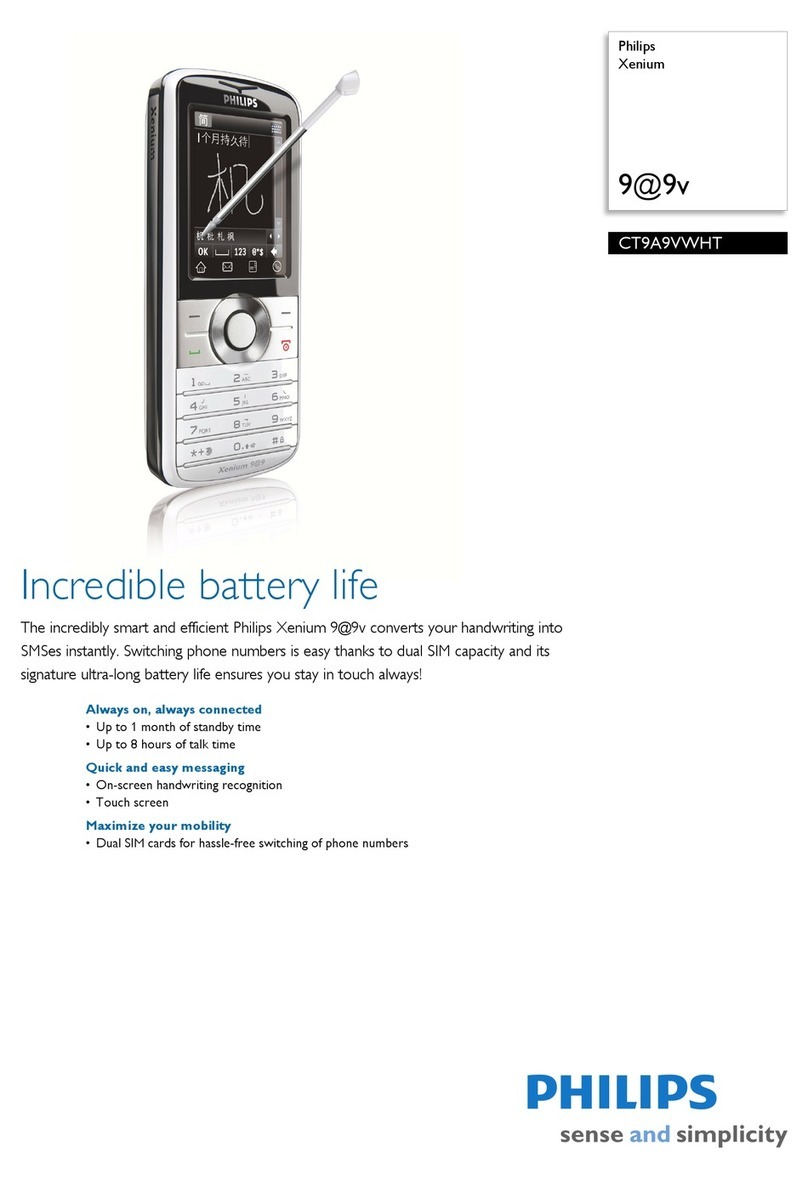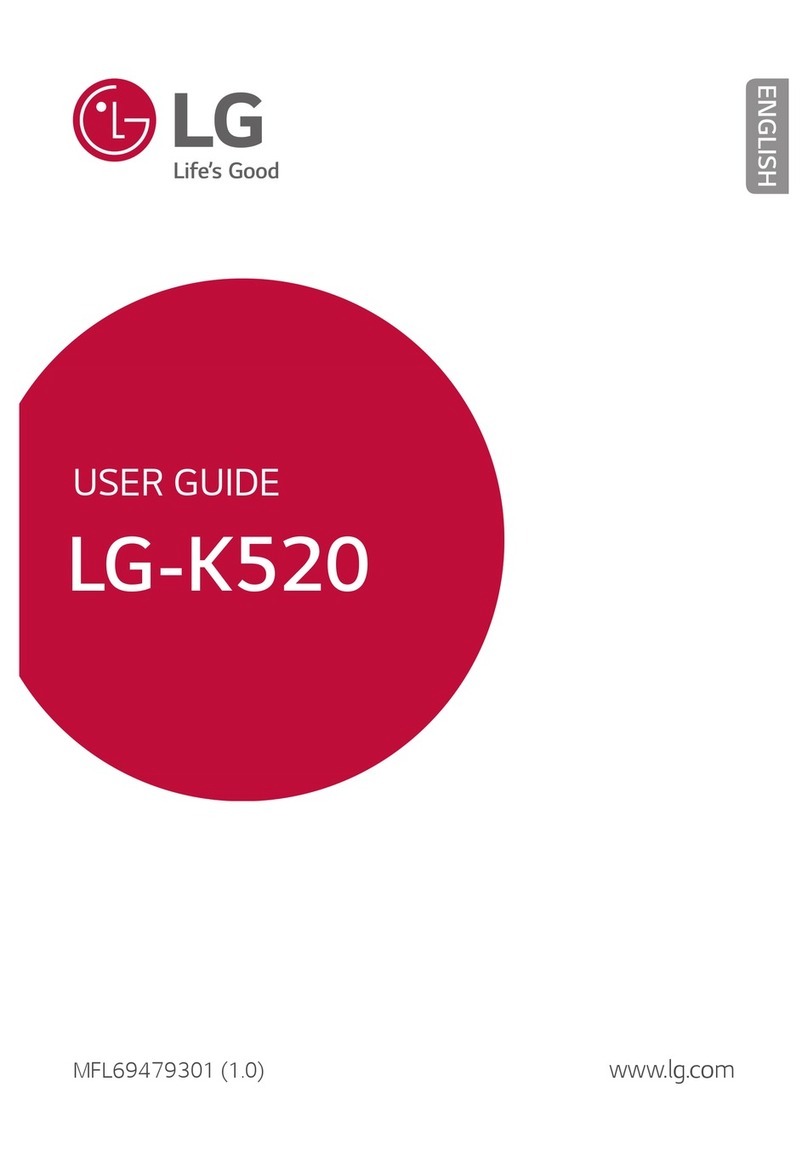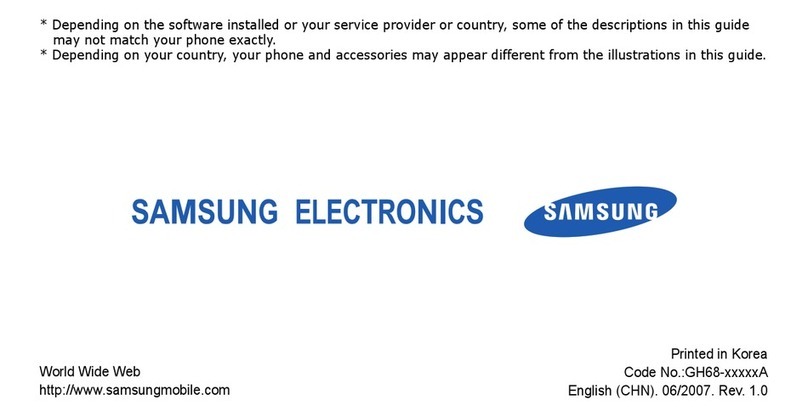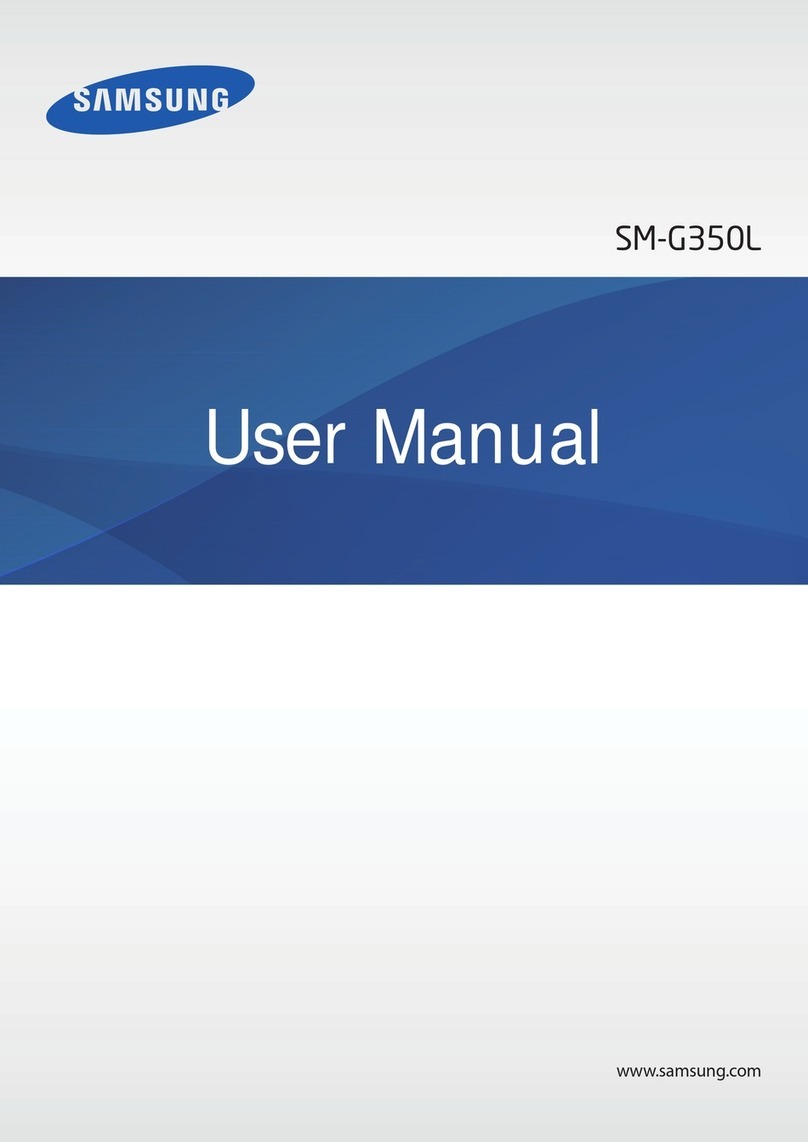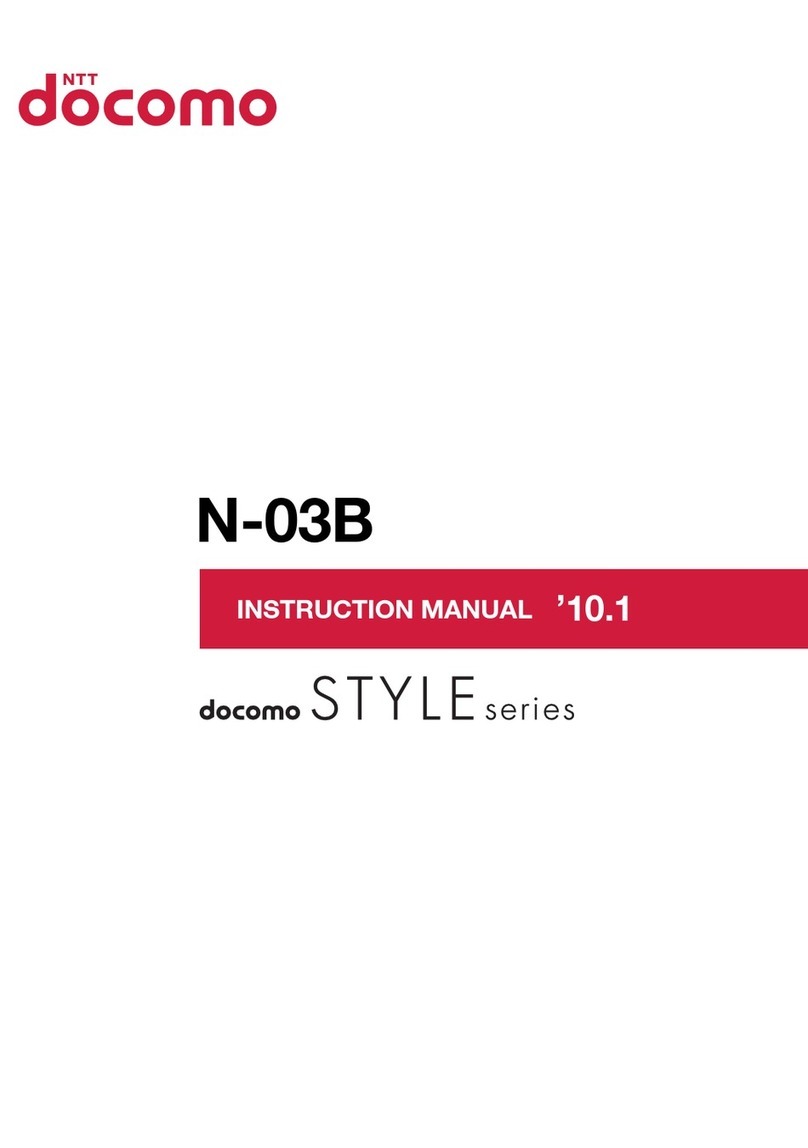Lenze L-force 8400 Series Use and care manual

L
EDS84AYCER
13358692
Ä.Dw}ä
Communication Manual
E84AYCER
PROFINET communication module
8400
L-force Communication

2LEDS84AYCER EN 2.0 - 11/2010

EDS84AYCER EN 2.0 - 11/2010 L3
E84AYCER communication manual (PROFINET)
Contents
Contents
1About this documentation . . . . . . . . . . . . . . . . . . . . . . . . . . . . . . . . . . . . . . . . . . . . . . . . . . . . . . . . . 6
1.1 Document history . . . . . . . . . . . . . . . . . . . . . . . . . . . . . . . . . . . . . . . . . . . . . . . . . . . . . . . . . . . . . . . 8
1.2 Conventions used . . . . . . . . . . . . . . . . . . . . . . . . . . . . . . . . . . . . . . . . . . . . . . . . . . . . . . . . . . . . . . . 9
1.3 Terminology used . . . . . . . . . . . . . . . . . . . . . . . . . . . . . . . . . . . . . . . . . . . . . . . . . . . . . . . . . . . . . . . 10
1.4 Notes used. . . . . . . . . . . . . . . . . . . . . . . . . . . . . . . . . . . . . . . . . . . . . . . . . . . . . . . . . . . . . . . . . . . . . . 11
2Safety instructions . . . . . . . . . . . . . . . . . . . . . . . . . . . . . . . . . . . . . . . . . . . . . . . . . . . . . . . . . . . . . . . .12
2.1 General safety instructions and application notes. . . . . . . . . . . . . . . . . . . . . . . . . . . . . . . . . 12
2.2 Device- and application-specific safety instructions . . . . . . . . . . . . . . . . . . . . . . . . . . . . . . . 13
2.3 Residual hazards . . . . . . . . . . . . . . . . . . . . . . . . . . . . . . . . . . . . . . . . . . . . . . . . . . . . . . . . . . . . . . . . 13
3Product description . . . . . . . . . . . . . . . . . . . . . . . . . . . . . . . . . . . . . . . . . . . . . . . . . . . . . . . . . . . . . . . 14
3.1 Application as directed . . . . . . . . . . . . . . . . . . . . . . . . . . . . . . . . . . . . . . . . . . . . . . . . . . . . . . . . . . 14
3.2 Identification . . . . . . . . . . . . . . . . . . . . . . . . . . . . . . . . . . . . . . . . . . . . . . . . . . . . . . . . . . . . . . . . . . . 14
3.3 Properties . . . . . . . . . . . . . . . . . . . . . . . . . . . . . . . . . . . . . . . . . . . . . . . . . . . . . . . . . . . . . . . . . . . . . . 15
3.4 Terminals and interfaces . . . . . . . . . . . . . . . . . . . . . . . . . . . . . . . . . . . . . . . . . . . . . . . . . . . . . . . . 15
4Technical data . . . . . . . . . . . . . . . . . . . . . . . . . . . . . . . . . . . . . . . . . . . . . . . . . . . . . . . . . . . . . . . . . . . . 16
4.1 General data and operating conditions . . . . . . . . . . . . . . . . . . . . . . . . . . . . . . . . . . . . . . . . . . . 16
4.2 Protective insulation . . . . . . . . . . . . . . . . . . . . . . . . . . . . . . . . . . . . . . . . . . . . . . . . . . . . . . . . . . . . 17
4.3 Protocol data . . . . . . . . . . . . . . . . . . . . . . . . . . . . . . . . . . . . . . . . . . . . . . . . . . . . . . . . . . . . . . . . . . . 19
4.4 Communication time. . . . . . . . . . . . . . . . . . . . . . . . . . . . . . . . . . . . . . . . . . . . . . . . . . . . . . . . . . . . 19
4.5 Internal switch latency . . . . . . . . . . . . . . . . . . . . . . . . . . . . . . . . . . . . . . . . . . . . . . . . . . . . . . . . . . 20
4.6 Dimensions . . . . . . . . . . . . . . . . . . . . . . . . . . . . . . . . . . . . . . . . . . . . . . . . . . . . . . . . . . . . . . . . . . . . . 21
5Installation . . . . . . . . . . . . . . . . . . . . . . . . . . . . . . . . . . . . . . . . . . . . . . . . . . . . . . . . . . . . . . . . . . . . . . . 22
5.1 Mechanical installation. . . . . . . . . . . . . . . . . . . . . . . . . . . . . . . . . . . . . . . . . . . . . . . . . . . . . . . . . . 23
5.1.1 Mounting for standard devices 0.25 kW and 0.37 kW . . . . . . . . . . . . . . . . . . . . . . 23
5.1.2 Mounting for standard devices from 0.55 kW . . . . . . . . . . . . . . . . . . . . . . . . . . . . . 24
5.1.3 Replacing the communication module . . . . . . . . . . . . . . . . . . . . . . . . . . . . . . . . . . . . 25
5.2 Electrical installation . . . . . . . . . . . . . . . . . . . . . . . . . . . . . . . . . . . . . . . . . . . . . . . . . . . . . . . . . . . . 26
5.2.1 EMC-compliant wiring . . . . . . . . . . . . . . . . . . . . . . . . . . . . . . . . . . . . . . . . . . . . . . . . . . . 26
5.2.2 Network topology . . . . . . . . . . . . . . . . . . . . . . . . . . . . . . . . . . . . . . . . . . . . . . . . . . . . . . . 26
5.2.3 PROFINET connection . . . . . . . . . . . . . . . . . . . . . . . . . . . . . . . . . . . . . . . . . . . . . . . . . . . . 28
5.2.4 Specification of the Ethernet cable. . . . . . . . . . . . . . . . . . . . . . . . . . . . . . . . . . . . . . . . 30
5.2.5 External voltage supply . . . . . . . . . . . . . . . . . . . . . . . . . . . . . . . . . . . . . . . . . . . . . . . . . . 32

E84AYCER communication manual (PROFINET)
Contents
4LEDS84AYCER EN 2.0 - 11/2010
6Commissioning . . . . . . . . . . . . . . . . . . . . . . . . . . . . . . . . . . . . . . . . . . . . . . . . . . . . . . . . . . . . . . . . . . . 34
6.1 Before initial switch-on. . . . . . . . . . . . . . . . . . . . . . . . . . . . . . . . . . . . . . . . . . . . . . . . . . . . . . . . . . 34
6.2 Configuring the PROFINET IO controller . . . . . . . . . . . . . . . . . . . . . . . . . . . . . . . . . . . . . . . . . . 35
6.3 Setting the station name . . . . . . . . . . . . . . . . . . . . . . . . . . . . . . . . . . . . . . . . . . . . . . . . . . . . . . . . 36
6.4 Setting the IP configuration. . . . . . . . . . . . . . . . . . . . . . . . . . . . . . . . . . . . . . . . . . . . . . . . . . . . . . 38
6.5 Initial switch-on. . . . . . . . . . . . . . . . . . . . . . . . . . . . . . . . . . . . . . . . . . . . . . . . . . . . . . . . . . . . . . . . . 40
7Data transfer . . . . . . . . . . . . . . . . . . . . . . . . . . . . . . . . . . . . . . . . . . . . . . . . . . . . . . . . . . . . . . . . . . . . . 41
8Process data transfer . . . . . . . . . . . . . . . . . . . . . . . . . . . . . . . . . . . . . . . . . . . . . . . . . . . . . . . . . . . . . . 42
8.1 Accessing process data / PDO mapping. . . . . . . . . . . . . . . . . . . . . . . . . . . . . . . . . . . . . . . . . . . 42
8.2 Preconfigured port interconnection of the process data objects (PDO). . . . . . . . . . . . . . 43
8.3 Configuring the port interconnection of the process data objects (PDO) freely . . . . . . 44
9Parameter data transfer . . . . . . . . . . . . . . . . . . . . . . . . . . . . . . . . . . . . . . . . . . . . . . . . . . . . . . . . . . . 48
9.1 The acyclic channel (PROFIdrive profile). . . . . . . . . . . . . . . . . . . . . . . . . . . . . . . . . . . . . . . . . . . 48
9.1.1 Connection establishment of an IO controller to an IO device . . . . . . . . . . . . . . 48
9.1.2 Acyclic data transmission process. . . . . . . . . . . . . . . . . . . . . . . . . . . . . . . . . . . . . . . . . 49
9.1.3 Structure of the PROFINET data telegram . . . . . . . . . . . . . . . . . . . . . . . . . . . . . . . . . 50
9.2 Reading parameters from the controller . . . . . . . . . . . . . . . . . . . . . . . . . . . . . . . . . . . . . . . . . . 51
9.2.1 Response after a correct read request . . . . . . . . . . . . . . . . . . . . . . . . . . . . . . . . . . . . . 52
9.2.2 Response after a read error. . . . . . . . . . . . . . . . . . . . . . . . . . . . . . . . . . . . . . . . . . . . . . . 53
9.2.3 Telegram example: Read request . . . . . . . . . . . . . . . . . . . . . . . . . . . . . . . . . . . . . . . . . 54
9.3 Writing parameters to the controller . . . . . . . . . . . . . . . . . . . . . . . . . . . . . . . . . . . . . . . . . . . . . 56
9.3.1 Response after a correct write request . . . . . . . . . . . . . . . . . . . . . . . . . . . . . . . . . . . . 58
9.3.2 Response after a write error . . . . . . . . . . . . . . . . . . . . . . . . . . . . . . . . . . . . . . . . . . . . . . 58
9.3.3 Telegram example: Write request . . . . . . . . . . . . . . . . . . . . . . . . . . . . . . . . . . . . . . . . 60
9.4 Error information (error) . . . . . . . . . . . . . . . . . . . . . . . . . . . . . . . . . . . . . . . . . . . . . . . . . . . . . . . . . 62
9.5 Consistent parameter data . . . . . . . . . . . . . . . . . . . . . . . . . . . . . . . . . . . . . . . . . . . . . . . . . . . . . . 64
10 Monitoring . . . . . . . . . . . . . . . . . . . . . . . . . . . . . . . . . . . . . . . . . . . . . . . . . . . . . . . . . . . . . . . . . . . . . . . 65
11 Diagnostics. . . . . . . . . . . . . . . . . . . . . . . . . . . . . . . . . . . . . . . . . . . . . . . . . . . . . . . . . . . . . . . . . . . . . . . 66
11.1 LED status displays . . . . . . . . . . . . . . . . . . . . . . . . . . . . . . . . . . . . . . . . . . . . . . . . . . . . . . . . . . . . . . 66
11.1.1 Module status displays. . . . . . . . . . . . . . . . . . . . . . . . . . . . . . . . . . . . . . . . . . . . . . . . . . . 67
11.1.2 Fieldbus status displays . . . . . . . . . . . . . . . . . . . . . . . . . . . . . . . . . . . . . . . . . . . . . . . . . . 68
11.1.3 Status displays at X256 and X257. . . . . . . . . . . . . . . . . . . . . . . . . . . . . . . . . . . . . . . . . 69
11.2 Diagnostics with the »Engineer« . . . . . . . . . . . . . . . . . . . . . . . . . . . . . . . . . . . . . . . . . . . . . . . . . 70
11.3 Diagnostic data . . . . . . . . . . . . . . . . . . . . . . . . . . . . . . . . . . . . . . . . . . . . . . . . . . . . . . . . . . . . . . . . . 71

EDS84AYCER EN 2.0 - 11/2010 L5
E84AYCER communication manual (PROFINET)
Contents
12 Error messages . . . . . . . . . . . . . . . . . . . . . . . . . . . . . . . . . . . . . . . . . . . . . . . . . . . . . . . . . . . . . . . . . . . 73
12.1 Short overview (A-Z) of the PROFINET error messages . . . . . . . . . . . . . . . . . . . . . . . . . . . . . 73
12.2 Possible causes and remedies . . . . . . . . . . . . . . . . . . . . . . . . . . . . . . . . . . . . . . . . . . . . . . . . . . . . 74
13 Parameter reference. . . . . . . . . . . . . . . . . . . . . . . . . . . . . . . . . . . . . . . . . . . . . . . . . . . . . . . . . . . . . . . 78
13.1 Parameters of the communication module . . . . . . . . . . . . . . . . . . . . . . . . . . . . . . . . . . . . . . . 78
13.2 Table of attributes . . . . . . . . . . . . . . . . . . . . . . . . . . . . . . . . . . . . . . . . . . . . . . . . . . . . . . . . . . . . . . 89
14 Index . . . . . . . . . . . . . . . . . . . . . . . . . . . . . . . . . . . . . . . . . . . . . . . . . . . . . . . . . . . . . . . . . . . . . . . . . . . . 91

E84AYCER communication manual (PROFINET)
About this documentation
6LEDS84AYCER EN 2.0 - 11/2010
1 About this documentation
Contents
The descriptions in this documentation only refer to the E84AYCER communication
module (PROFINET).
The features and functions of the communication module are described in detail.
Examples illustrate typical applications.
This documentation also contains...
Safety instructions that must be observed
Key technical data relating to the communication module
Information about the versions of the Lenze standard devices to be used
Notes on troubleshooting and fault elimination
The theoretical concepts are only explained to the level of detail required to understand
the function of the communication module.
Depending on the software version of the controller and the version of the »Engineer«
software installed, the screenshots in this documentation may deviate from the
»Engineer« representation.
This documentation does not describe any software provided by other manufacturers. No
liability can be accepted for corresponding data provided in this documentation. For
information on how to use the software, please refer to the host system (master)
documents.
All brand names mentioned in this documentation are trademarks of their respective
owners.
Tip!
Detailed information on PROFINET is provided on the homepage of the PROFIBUS
user organisation which also develops PROFINET communication technology:
www.profibus.com
Note!
This documentation supplements the mounting instructions supplied with the
communication module and the "Inverter Drives 8400" hardware manual.

EDS84AYCER EN 2.0 - 11/2010 L7
E84AYCER communication manual (PROFINET)
About this documentation
Target group
This documentation addresses to persons who configure, install, commission, and
maintain the networking and remote maintenance of a machine.
Tip!
Documentation and software updates of Lenze products can be found on the
Internet in the "Services & Downloads" area at:
www.Lenze.com
Validity information
The information in this documentation is valid for the following devices:
Extension module Type designation From hardware
version
From software
version
PROFINET communication module E84AYCER VA 02.00

E84AYCER communication manual (PROFINET)
About this documentation
Document history
8LEDS84AYCER EN 2.0 - 11/2010
1.1 Document history
Your opinion is important to us!
These instructions were created to the best of our knowledge and belief to give you the
best possible support for handling our product.
Perhaps we have not succeeded in achieving this objective in every respect. If you notice
this, please send your suggestions and points of criticism in a short e-mail to:
Thank you very much for your support.
Your Lenze documentation team
Material number Version Description
13313969 1.0 04/2010 TD17 First edition
13358692 2.0 11/2010 TD17 • General revision
• Update for SW version 02.00

EDS84AYCER EN 2.0 - 11/2010 L9
E84AYCER communication manual (PROFINET)
About this documentation
Conventions used
1.2 Conventions used
This documentation uses the following conventions to distinguish between different types
of information:
Type of information Identification Examples/notes
Spelling of numbers
Decimal Standard spelling Example: 1234
Hexadecimal 0x[0 ... 9, A ... F] Example: 0x60F4
Binary
• Nibble
In inverted commas
Point
Example: ’100’
Example: ’0110.0100’
Decimal separator Point The decimal point is always used.
For example: 1234.56
Text
Program name » « PC software
Example: Lenze »Engineer«
Control element Bold The OK button... / The Copy command... / The
Properties tab... / The Name input field...
Hyperlink Underlined Optically highlighted reference to another topic. In
this documentation it is activated via mouse-click.
Symbols
Page reference (9) Optically highlighted reference to another page. In
this documentation it is activated via mouse-click.
Step-by-step instructions Step-by-step instructions are indicated by a
pictograph.

E84AYCER communication manual (PROFINET)
About this documentation
Terminology used
10 LEDS84AYCER EN 2.0 - 11/2010
1.3 Terminology used
Term Meaning
Controller Lenze frequency inverter of the "Inverter Drives 8400" product series which the
communication module can be used with.
Application as directed (14)
Standard device
»Engineer« Lenze software which supports you throughout the whole machine life cycle -
from planning to maintenance.
Code "Container" for one or several parameters used to parameterise or monitor the
device.
Subcode If a code contains several parameters they are stored in so-called "subcodes".
This manual uses a slash "/" as a separator between code and subcode
(e.g. "C00118/3").
HW Hardware
SW Software
I/O controller PROFINET master
The I/O controller takes over the master function for data communication of the
decentralised field devices. The I/O controller usually is the communication
interface of a PLC.
I/O device PROFINET slave
IO supervisor Engineering and diagnostics tools
The IO supervisor can access process data, diagnostic data, and alarm data.

EDS84AYCER EN 2.0 - 11/2010 L11
E84AYCER communication manual (PROFINET)
About this documentation
Notes used
1.4 Notes used
The following pictographs and signal words are used in this documentation to indicate
dangers and important information:
Safety instructions
Structure of safety instructions:
Application notes
Pictograph and signal word!
(characterise the type and severity of danger)
Note
(describes the danger and gives information about how to prevent dangerous
situations)
Pictograph Signal word Meaning
Danger! Danger of personal injury through dangerous electrical voltage
Reference to an imminent danger that may result in death or serious
personal injury if the corresponding measures are not taken.
Danger! Danger of personal injury through a general source of danger
Reference to an imminent danger that may result in death or serious
personal injury if the corresponding measures are not taken.
Stop! Danger of property damage
Reference to a possible danger that may result in damage to material assets
if the corresponding measures are not taken.
Pictograph Signal word Meaning
Note! Important note for trouble-free operation
Tip! Useful tip for easy handling
Reference to other documentation

E84AYCER communication manual (PROFINET)
Safety instructions
General safety instructions and application notes
12 LEDS84AYCER EN 2.0 - 11/2010
2 Safety instructions
2.1 General safety instructions and application notes
Lenze drive components ...
– must only be used as directed.
Application as directed (14)
– must never be commissioned if they display signs of damage.
– must never be modified technically.
– must never be commissioned if they are not fully mounted.
– must never be operated without the required covers.
– can have live, moving and rotating parts during operation, depending on their
degree of protection. Surfaces can be hot.
The following applies to Lenze drive components ...
– Only use permissible accessories.
– Only use genuine spare parts supplied by the manufacturer of the product.
Observe all regulations for the prevention of accidents, directives and laws that apply
to the location of use.
Observe all the specifications contained in the enclosed and related documentation.
– This is a precondition for ensuring safe, trouble-free operation and for making use of
the stated product features.
Properties (15)
– The specifications, processes, and circuitry described in this document are for
guidance only and must be adapted to your own specific application. Lenze does not
take responsibility for the suitability of the process and circuit proposals.
All works on and with Lenze drive components may only be carried out by qualified
personnel. In accordance with IEC 60364 and CENELEC HD 384 these are persons who ...
– are familiar with installing, mounting, commissioning, and operating the product.
– have the qualifications necessary for their occupation.
– know and are able to apply all regulations for the prevention of accidents, directives
and laws that apply to the location of use.
Note!
It is absolutely vital that the stated safety measures are implemented in order to
prevent serious injury to persons and damage to material assets.
Always keep this documentation to hand in the vicinity of the product during
operation.

EDS84AYCER EN 2.0 - 11/2010 L13
E84AYCER communication manual (PROFINET)
Safety instructions
Device- and application-specific safety instructions
2.2 Device- and application-specific safety instructions
During operation, the communication module must be securely connected to the
standard device.
Use a safely separated power supply unit in accordance with EN 61800-5-1 ("SELV"/
"PELV").
Only use cables that meet the listed specifications.
Specification of the Ethernet cable (30)
2.3 Residual hazards
Protection of persons
If the Inverter Drives 8400 are used on a phase earthed mains with a rated mains
voltage ≥400 V, external measures need to be implemented in order to provide reliable
protection against accidental contact.
Protective insulation (17)
Device protection
The communication module contains electronic components that can be damaged or
destroyed by electrostatic discharge.
Installation (22)
Documentation for the standard device, control system, plant/machine
All the other measures prescribed in this documentation must also be
implemented. Observe the safety instructions and application notes contained
in this manual.

E84AYCER communication manual (PROFINET)
Product description
Application as directed
14 LEDS84AYCER EN 2.0 - 11/2010
3 Product description
3.1 Application as directed
The communication module ...
is an accessory module that can be used in conjunction with the following standard
devices:
is an item of equipment intended for use in industrial power systems.
should only be used under the operating conditions prescribed in this documentation.
should only be used in PROFINET networks.
Any other use shall be deemed inappropriate!
3.2 Identification
The type designation and the hardware and software versions of the communication
module are indicated on the nameplate:
[3-1] Identification data
Product series Type designation From software version
Inverter Drives 8400 StateLine E84AVSCxxxxx 05.00
Inverter Drives 8400 HighLine E84AVHCxxxxx 05.00
Inverter Drives 8400 TopLine E84AVTCxxxxx 01.00
E84YCPM001E
1 Type designation (type)
E84 Product series
AVersion
Y Module identification: Extension module
C Module type: Communication module
ER PROFINET
V/S V: Coated design
S: Standard design
2 Hardware version (HW)
3 Software version (SW)
8400
Type:
Ser.No.:
HW:
SW:
HW:
SW:

EDS84AYCER EN 2.0 - 11/2010 L15
E84AYCER communication manual (PROFINET)
Product description
Properties
3.3 Properties
Interface module for the PROFINET communication system to be secured to the
expansion slots of the Inverter Drives 8400
The communication module can either be supplied internally by the standard device or
externally by a separate voltage source.
Support of the I&M0...4 functionality for the identification of the standard device
Automatic detection of the baud rate 100 Mbps
A line topology is enabled by the integrated 2-port switch.
Support of the LLDP protocol for the topology recognition
Support of the SNMP protocol for diagnostic purposes
Access to all Lenze parameters
3.4 Terminals and interfaces
2 RJ45 sockets for the PROFINET connection
2-pole plug connector for the external voltage supply of the communication module.
Front LEDs for diagnosing the ...
– Voltage supply of the communication module;
– Connection to the standard device;
–PROFINETconnection;
– PROFINET activity.
[3-2] E84AYCER communication module (PROFINET)
E84YCER001C
X255 External voltage supply of the communication
module
• 2-pole plug connector with spring
connection
External voltage supply (32)
X256 PROFINET input (IN)
X257 PROFINET output (OUT)
• RJ45 sockets
• Each with 2 LED status displays for
diagnostics
Network topology (26)
PROFINET connection (28)
Status displays at X256 and X257 (69)
MS
ME
BS
BE
DE
5 LED status displays for diagnostics
Module status displays (67)
Fieldbus status displays (68)

E84AYCER communication manual (PROFINET)
Technical data
General data and operating conditions
16 LEDS84AYCER EN 2.0 - 11/2010
4 Technical data
4.1 General data and operating conditions
Field Values
Order designation E84AYCER
Communication profile PROFINET
Communication medium S/FTP (Screened Foiled Twisted Pair, ISO/IEC 11801 or EN 50173), CAT 5e
Interface RJ45: Standard Ethernet (in accordance with IEEE 802.3), 100Base-TX (Fast
Ethernet)
Network topology Tree, star, and line
Type of node IO device with real time (RT) communication properties
Number of device nodes Max. 255 in the subnetwork
Max. cable length 100 m
PUO ID number 0x0106
Device identification (Device ID) 0x8400
Baud rate 100 Mbps
Switching method "Store and forward"
Switch latency Approx. 125 μs at max. telegram length
Voltage supply External supply via separate power supply unit
• "+": V = 24 V DC (20.4 V - 0 % ... 28.8 V + 0 %), I = 140 mA
• "-": Reference potential for external voltage supply
Conformities, approvals • CE
•UL
"Inverter Drives 8400" hardware manual
This manual contains data on ambient conditions and the electromagnetic
compatibility (EMC) that also apply to the communication module.

EDS84AYCER EN 2.0 - 11/2010 L17
E84AYCER communication manual (PROFINET)
Technical data
Protective insulation
4.2 Protective insulation
Danger!
Dangerous electrical voltage
If the Inverter Drives 8400 are used on a phase earthed mains with a rated mains
voltage ≥400 V, external measures need to be implemented in order to provide
reliable protection against accidental contact.
Possible consequences:
• Death or serious injury
Protective measures:
• If protection against accidental contact needs to be provided for the control
terminals of the controller and for the connections of the plugged-in device
modules, ...
– a double isolating distance must exist.
– the components to be connected must be provided with the second
isolating distance.
Note!
The protective insulation provided in the Inverter Drives 8400 is implemented in
accordance with EN 61800-5-1.

E84AYCER communication manual (PROFINET)
Technical data
Protective insulation
18 LEDS84AYCER EN 2.0 - 11/2010
The illustration below ...
shows the arrangement of the terminal strips and the separate potential areas of the
Inverter Drive 8400.
serves to determine the decisive protective insulation between two terminals located
in differently insulated separate potential areas.
[4-1] Protective insulation in accordance with EN61800-5-1
E84YCXX007
Reinforced insulation
Basic insulation
Functional insulation
X4
X6
X5
X3
Bus Ext. DC
MCI
X4
X6
X5
X3
X1X1
X105X105
X100X100
MMI
X106X106X106X106
X106X106X106X101
Terminal strip Connection
X100 Mains / DC-bus connection
X101 Relay contact
X105 Motor / brake resistor
X106 Motor PTC
X1 System bus (CANopen)
X3 Analog inputs / outputs
X4 Digital outputs
X5 Digital inputs
X6 Diagnostics
MCI Slot for communication module
MMI Slot for memory module

EDS84AYCER EN 2.0 - 11/2010 L19
E84AYCER communication manual (PROFINET)
Technical data
Protocol data
Example
Which type of protective insulation is implemented between the bus terminal of the
device module in slot MCI and mains terminal X100?
The separate potential area with the better protective insulation is decisive.
– The separate potential area of the device module bus terminal is "functionally
insulated".
– The separate potential area of the mains terminal has a "reinforced insulation".
Result: The insulation between mains terminal X100 and the bus terminal is of the
"reinforced insulation" type.
4.3 Protocol data
4.4 Communication time
The communication time is the time between the start of a request and the arrival of the
corresponding response.
The communication times in the PROFINET network depend on the ...
Processing time inside the controller;
Telegram runtime (baud rate / telegram length);
Nesting depth of the network.
Processing time inside the controller
There are no interdependencies between parameter data and process data.
Field Values
Process data words (PCD) Max. 16 process data words (max. 32 bytes)
Acyclic parameter data channel Limited by the PROFINET frame size
Data Processing time
Process data Approx. 2 ms
+ 0 ... 1 ms
+ 1 ... x ms
Update cycle
Processing time in the module
Runtime of the application task of the technology
application used (tolerance)
Parameter data Approx. 30 ms + a tolerance of 20 ms (typically)
• Some codes may require a longer processing time (see software manual/
»Engineer« online help for Inverter Drive 8400).

E84AYCER communication manual (PROFINET)
Technical data
Internal switch latency
20 LEDS84AYCER EN 2.0 - 11/2010
4.5 Internal switch latency
The integrated 2 port switch causes runtime delays which can be calculated as follows:
Example:
20 process data words + 4 PROFIsafe words => 48 bytes
((36 permanent bytes + 48 bytes) x 8 x 10 nsec) + 4 μsec
(84 bytes x 8 x 10 nsec) + 4 μsec
6.72 μsec + 4 μsec = 10.72 μsec
According to the PROFINET specification, the shortest PROFINET IO telegram must have a
data length of 72 bytes. If the 36 permanent bytes are subtracted from the 72 bytes, 36
bytes are available for process data. If now less than 36 bytes of process data are used, the
PROFINET IO telegram is filled with "zero bytes" until it can be transmitted. As a
consequence for the calculation formula, the shortest PROFINET IO telegram with 18
process data words (36 bytes) has always the same length and thus the runtime delay is
the same, too.
Runtime delay = ((36 permanent bytes + process data in bytes) x 8 x 10 nsec) + 4 μsec
Note!
The use of external switches can also lead to runtime delays. Depending on the
system constellation, it may be useful to create a star topology or a line/mix
topology.
Network topology (26)
Other manuals for L-force 8400 Series
23
Table of contents




